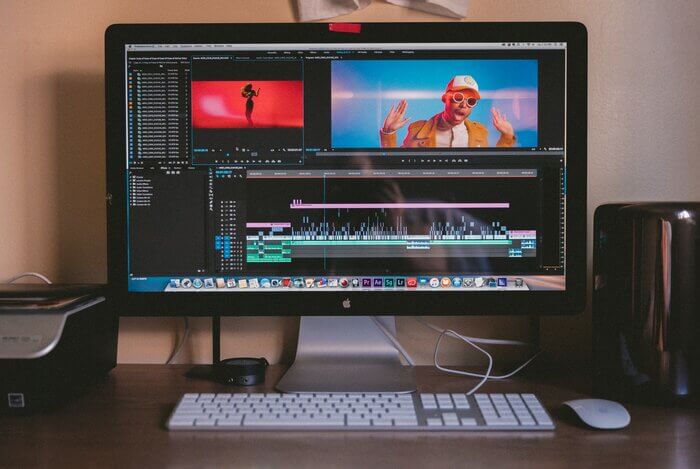Tips to Make Instructional Videos
 ClickHelp Teamin Technical Communication on 3/11/2021 — 7 minute read
ClickHelp Teamin Technical Communication on 3/11/2021 — 7 minute read ClickHelp Teamin Technical Communication on 3/11/2021 — 7 minute read
ClickHelp Teamin Technical Communication on 3/11/2021 — 7 minute readDo you know that 90% of users prefer instructional videos when they want to learn something?

Just imagine how many people watch YouTube every day looking for How-to videos to say nothing about those who choose video courses. Not only individuals tend to learn by watching video content, but even companies also instruct their employees this way.
More than 50% of people watch video tutorials at least twice a week.
Isn’t that impressive? Surely, it is! So, let’s go on learning HOW to create video content for your tech docs!
An instructional video is a video that explains, demonstrates, and shows how to do something. Here are some examples of instructional videos.
Instructional videos can be of the following types:
You will be surprised to learn that preparation steps may take even more time than shooting a video itself, as a good plan is 50% of success. It is not only about preparing the tools. It is about what and how you are going to tell your viewers. So, at first, you are to:

When you shoot a video with a camera, most probably, you’ll need to use video editing software. The most popular ones are Adobe Premiere Pro, CyberLink PowerDirector 365, Lightworks, Hitfilm Express, Shotcut, etc. Some of them are free, some are paid, but in a wide variety of tools, you’ll surely find the best tool for you. Though I would say that working with this type of content is not for beginners. It is a more advanced level.
If you only start developing your skills in producing video-content, choose screencasts. Take a look at the list of screen and video capture software: Wondershare DemoCreator, CamStudio, QuickTime, Monosnap, Jing, etc. Some of them not only allow you to capture the screen but also to record through a webcam, record audio, and edit video. Pay attention to these features when choosing a tool.
And, here are some tips on how to improve your video:
Choosing the right platform for video hosting is as important as creating valuable content. Videos are always heavier than texts. This may cause server lag or a website going down. And what you are looking for is the ability to share your content without problems. Obviously, it is a great idea to use a video hosting platform instead of using your own resources to host videos. Hosting platforms can be of the following types:
Of course, these are the most popular ones. As a rule, paid video hosting platforms are used for specific business needs. But it doesn’t mean that you are to use them. When you only start producing video content, choose a free hosting platform that is familiar to you. Everyone knows YouTube and how to use it. So, do not hesitate to use it as well.
Most technical writing tools allow you to insert video links in technical docs. Moreover, some help authoring tools, like ClickHelp, allow embedding videos into online documentation. The mechanism is like that: your video hosting platform generates a piece of HTML – the embed code – that you can insert into your blog or website. And that’s it – a simple solution to a complex problem. If you need more information on how to insert videos while creating content in a software documentation tool, check out this instruction – Insert Videos.
Gathering feedback is useful at all stages. Perhaps you don’t see some imperfections in your script or storyboard. You’ll have enough time to make corrections if you ask someone to take a look at what you are doing before recording. What seems easy and obvious for you may be different for other people. And, sometimes, we do not see how to improve what has already been done. We need an outside perspective.
As for analyzing the results, it is all about tracking statistics. All video hosting platforms allow users to do that. If you want to create video content that viewers like, you are to track your statistics regularly to find out who watches your videos, whether they enjoy watching or not, what videos are most popular, etc. So, the most common figures are views, watch time, audience retention, percent liked/disliked, traffic sources, gender, age, top countries, etc.

Videos that do not feature people often need a voiceover, for example, screencasts, product demos, etc. How to do that?
But what should one do if it is too complicated to record voice? There is a way out – add captions or subtitles to your video. One would say that it is complicated. Believe me, it is not. There are a lot of free tools to help you do that: Subtitle Horse, Amara, DotSub, and many others.
Now you are ready to start shooting! Another piece of advice here: do not worry if your equipment is not professional and super-expensive. Yes, some types of video content require using specific devices. But today, there are many other gadgets and tools that allow creating decent videos. Sometimes, even a smartphone camera can do a great job! You do not necessarily need expensive and professional software. There are a lot of free tools and services with a wide variety of features to help you create high-quality video content.
Video has replaced or supplemented written content for a number of companies. It efficiently displays the options of how to use a product and enables two-way communication. With all the above-mentioned tips, you are ready to create your instructional videos for technical documentation. Video content can make your online docs incredible: you can not only transmit information but also add some emotions to it. And, of course, show users how strongly you love your occupation.
Along with that, we get a perspective of what new skills become a must-have for technical writers in 2021. I wonder what we are going to have next!
Good luck with your technical writing!
ClickHelp Team
Author, host and deliver documentation across platforms and devices
Get monthly digest on technical writing, UX and web design, overviews of useful free resources and much more.
"*" indicates required fields